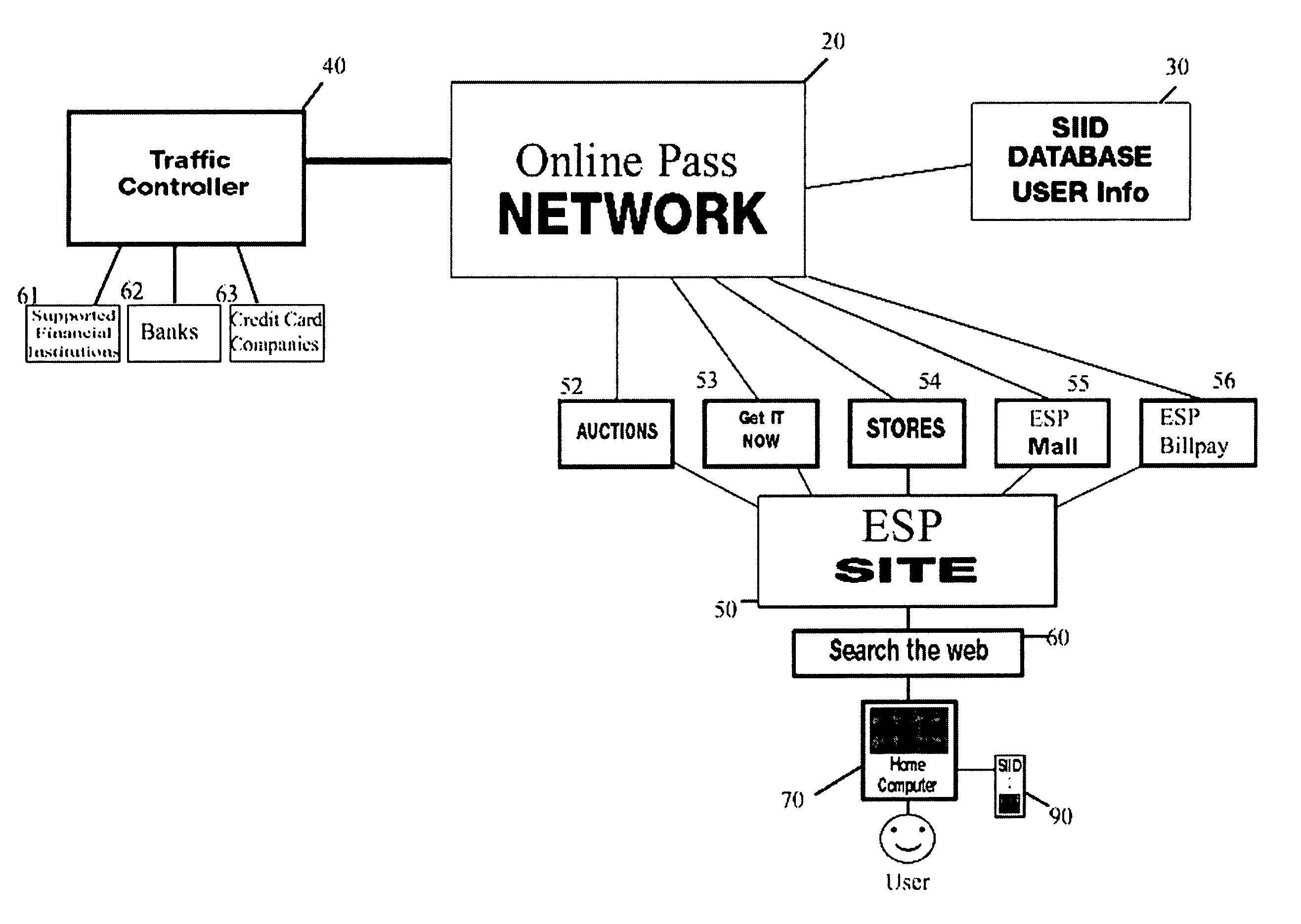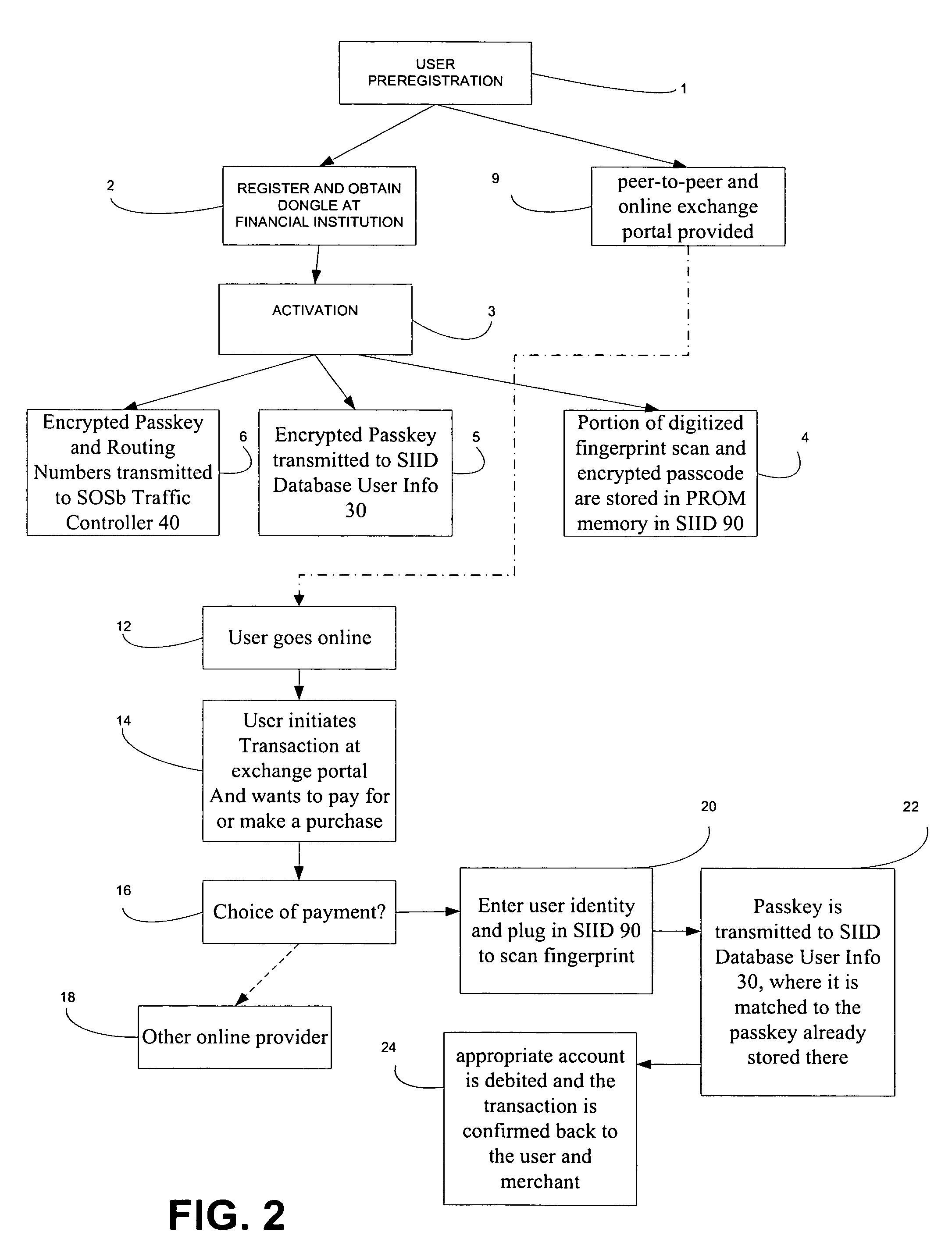System for secure online selling, buying and bill pay in an electronic commerce setting
a technology of biometric security and electronic commerce, applied in payment protocols, instruments, data processing applications, etc., can solve problems such as unsuspecting consumers eventually paying, acutely susceptible to theft, and purchasing thousands of dollars worth of merchandis
- Summary
- Abstract
- Description
- Claims
- Application Information
AI Technical Summary
Benefits of technology
Problems solved by technology
Method used
Image
Examples
Embodiment Construction
[0034]The present invention is a system, inclusive of an exchange service provider (ESP) topology and method for verifying personal ID and facilitating secure transactions using encrypted biometric information. The system employs a Secure Individual Identity Device (SIID) having an integrated biometric (fingerprint) scanner for enhanced authentication and security for any online credit or debit transaction (purchase, sale, banking, bill-paying, etc.) in electronic commerce, or retail point-of-sale setting.
[0035]The biometric SIID and the way that it is implemented in the larger context of the present system greatly enhances security and yet also simplifies the checkout process to eliminate fraudulent transactions.
[0036]The system also relies on a service provider that hosts an array of computer servers and implements a web portal for secure online authentications and other exchange opportunities. This system is in constant network communication with an independent database that prov...
PUM
 Login to View More
Login to View More Abstract
Description
Claims
Application Information
 Login to View More
Login to View More - R&D
- Intellectual Property
- Life Sciences
- Materials
- Tech Scout
- Unparalleled Data Quality
- Higher Quality Content
- 60% Fewer Hallucinations
Browse by: Latest US Patents, China's latest patents, Technical Efficacy Thesaurus, Application Domain, Technology Topic, Popular Technical Reports.
© 2025 PatSnap. All rights reserved.Legal|Privacy policy|Modern Slavery Act Transparency Statement|Sitemap|About US| Contact US: help@patsnap.com



